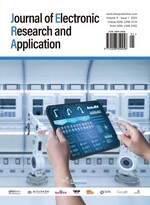Fantasy Transportation: New Rail-Powered Flying Coach
Abstract
To address the challenges of long commuting times, traffic congestion, high energy consumption, and emissions in inter-city travel, a new type of flying coach has been developed. This innovation aims to significantly shorten inter-city commuting times, enhance travel efficiency, and simultaneously reduce energy consumption and emissions. The flying coach integrates rail power supply technology, an intelligent operating system, and advanced new materials, comprising a catenary power supply guide rod and various sensor components. Based on analysis of traditional aircraft design principles, the research team simulated the design of the rail-powered flying coach using software such as AutoCAD and SolidWorks for three-dimensional modeling. The analysis results indicate that, compared to traditional aircraft and rail trains, the design of the new flying coach reduces its overall weight while maintaining carrying capacity, thereby improving commuting efficiency and environmental performance. This development lays a solid foundation for creating a greener, more efficient, and convenient inter-city transportation network.
References
Luo J, Xu X, 2023, Research on Bionic Design of Magnetic Levitation Train. Industrial Engineering Design, 5(05): 83–91.
Hua D, 2023, Application of DC Centralized Power Supply Technology in Rail Transit Lighting System. Electromechanical Information, 2023(18): 8–11.
Yan H, Xue B, Liu Z, et al., 2024, Whole-Life Carbon Footprint of Hydrogen Fuel Cell Buses: Contribution to the “Dual-Carbon” Goal. Environmental Chemistry, 2024: 1–9.
Feng A, 2020, Development Status and Prospect of Domestic Urban Rail Transportation Technology. Jiangsu Construction, 2020(03): 1–3.
Wu B, 2024, Flying Cars Open Up a New Road for Future Travel. Tongfang Knowledge Network (Beijing) Technology Co., Ltd. https://doi.org/10.28867/n.cnki.nxfzb.2024.001269
Liu J, Qin B, Cai Q, et al., 2024, Optimal Allocation of Energy Storage Capacity for Urban Rail Transit Taking into Account Renewable Energy Access. Grid Technology, 2024: 1–10. https://doi.org/10.13335/j.1000-3673.pst.2024.0149
Yang NB, Liang W, 2009, Development of Composite Structures for Civil Aircraft. Aerospace Manufacturing Technology, 2009(S2): 108–112.
Zhang L, 2020, Design Analysis of Intelligent LED Energy Saving Lighting System. Digital Communication World, 2020(08): 126–127.
Wang X, Quan W, Liu J, et al., 2021, A Design Scheme of Hybrid Power Test Platform for Rail Transportation. Power Electronics Technology, 55(09): 1–5.
Zhou J, 2024, Research and Application of a New Distributed Energy Intelligent Management System for Power Systems. Science and Innovation, 2024(12): 185–187.
Yu X, 2022, Optimization of Energy Storage Capacity Allocation and Scheduling for Urban Rail Transit Considering Renewable Energy Power Supply, thesis, East China Jiaotong University.
Xiao Z, Duan Q, Liao Y, 2023, Study on the Whole Life Cycle of Photovoltaic Power Generation System for Urban Rail Transit. Mechanical and Electrical Engineering Technology, 52(07): 19–23.
Chai Q, 2023, Discussion on the Level of Wheelset Repair for Electric Passenger Cars in Urban Rail Transit. Science and Technology Innovation and Application, 13(17): 149–152 + 157.
Deng J, 2024, Technical Status and Development of Electric Vertical Takeoff and Landing Vehicles. Journal of Aeronautics, 45(05): 55–77.
Li Z, Bian J, 2024, Design and Key Technology Research of Flying Vehicle System. Automotive Electronics, 2024(06): 24–25 + 28.
Gao Z, Qiao X, 2024, Research on Energy Recovery Technology in Mechatronic System. Shihezi Science and Technology, 2024(02): 37–39.
Lai Z, 2024, In-depth Exploration of Energy Saving and Consumption Reduction in Urban Rail Transit. Urban Rail Transportation Research, 2024: 1–6.

